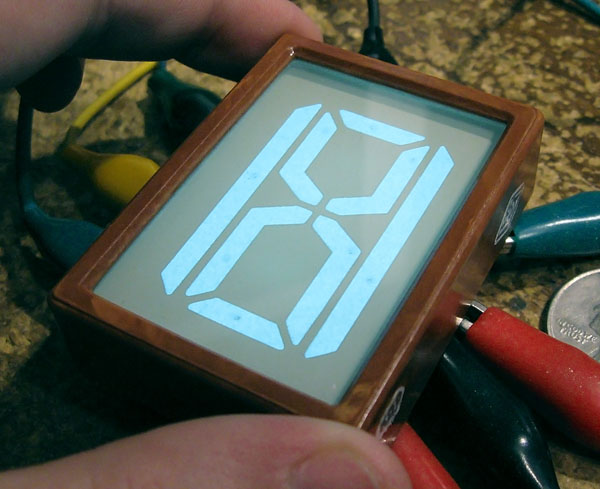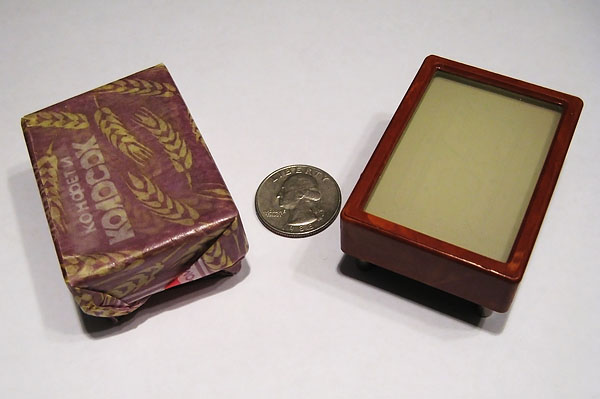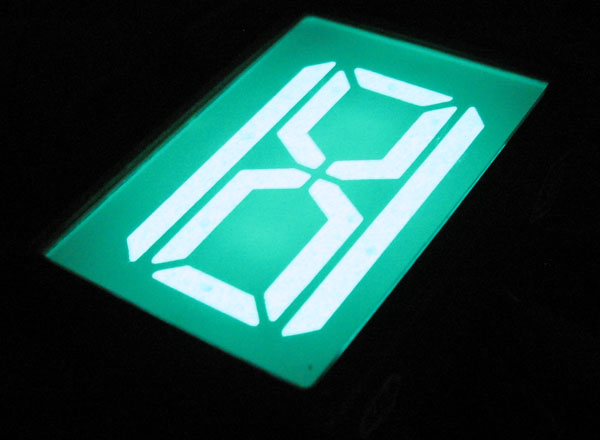| Soviet IEL-0-VI Electroluminescent Display | |
| Written by AnubisTTP on 2012-03-18 |
|
 |
The IEL-0-VI represents a not-often-seen class of display that was used almost exclusively within the former Soviet Union; a segmented electroluminescent display. Segmented EL displays use phosphor, but are fundamentally different from VFDs in that they are not vacuum tubes and do not have a hot cathode filament. Instead, an organic resin with a crystalline phosphor suspension is sandwiched between a conductive bottom layer and a tin oxide glass window to form a capacitor, similar to the way in which modern EL wire works. When rapidly charged and discharged by a high voltage source, the phosphor emits light which can be seen through the glass front of the display. The IEL-0-VI requires an AC voltage of approximately 200 volts at 400hz to function properly; approximately 8 times the voltage required to light a similar size VFD. The strange looking high-efficiency segment pattern serves a special purpose; it can generate nearly every Cyrillic and Roman character (except the letter T) using only eight segments.
The IEL-0-VI and other displays of its family are ruggedly constructed out of a glassivated material, which can withstand extreme punishment that would destroy a conventional VFD. Electronics lore has that these displays were originally intended for use in the cockpits of Soviet tanks.

Soviet IEL-0-VI electroluminescent display, normal operation.

Two IEL-0-VI displays, one still packed as shipped. The Cyrillic writing on the paper reads 'Wheat Ear Candy'

The unusual segment pattern of the IEL-0-VI can generate nearly any Cyrillic or Roman character using only eight segments.
 Return to Vacuum Fluorescent Displays
Return to Vacuum Fluorescent Displays






 Return to Vacuum Fluorescent Displays
Return to Vacuum Fluorescent Displays